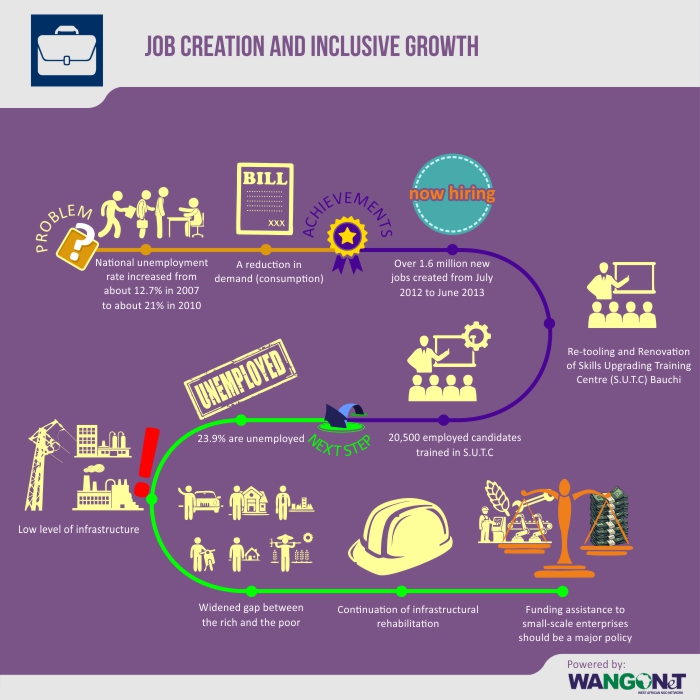Chapter 36
Job Creation and Inclusive Growth
Background
The Nigerian economy has averaged an impressive growth rate of about 7% over the past five years. Over the same period, however, the national unemployment rate increased from about 12.7% in 2007 to about 21% in 2010.
Past Reform and Achievements
The Agricultural Transformation Agenda (ATA) was based on the recognition that growth in the agricultural sector is pro-poor, inclusive, and could generate many jobs. The Community Service Scheme was designed to engage youth in labour-intensive work such as the construction and rehabilitation of social and economic infrastructure; and it engaged about 120,000 youth from 2012–2014 with 5,156 persons with disabilities offered temporary employment.
The Graduate Internship Scheme was designed to enhance the skills development of Nigerian graduates towards their employability, by attaching them to competent firms; about 4,000 graduates have been matched under this scheme. The YouWin! Programme was created to support young, existing or aspiring entrepreneurs so that they could create jobs; and about trained 12,000 aspiring or existing young entrepreneurs have created over 26,000 new jobs. A good number of health workers were employed in the implementation of the Save One Million Lives; with over 9,000 were recruited, trained, and deployed on the SURE-P front alone.
The Youth Employment in Agriculture Programme (YEAP) would empowered 740,000 market-oriented agricultural producers and 18,500 ‘N-Agricpreneurs’. The Technical Vocational Education and training (TVET) equipped about 220 young Mechanical and Electrical/Electronics engineering graduates with essential skills to take up job spaces in the power sector.
Challenges and Next Steps
Government employment generation policies in agriculture, manufacturing, power, housing and urban development, solid minerals, and communication technology should be vigorously implemented to achieve the desired results. Power sector revitalization should be completed as soon as possible, as the sector remains a key driver for job creation and self-employment. Infrastructural rehabilitation should also be continued at a fast pace, with special focus on rural areas.


